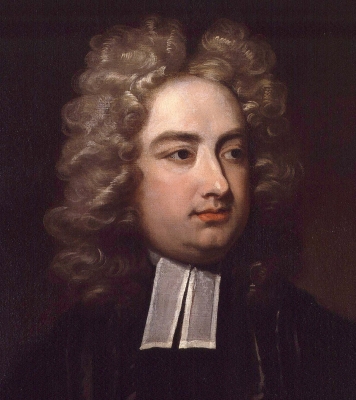
Gulliver’s Travels, or Travels into Several Remote Nations of the World. In Four Parts. By Lemuel Gulliver, First a Surgeon, and then a Captain of Several Ships is a 1726 prose satire by the Irish writer and clergyman Jonathan Swift, satirising both human nature and the “travellers’ tales” literary subgenre.
The book was an immediate success. The English dramatist John Gay remarked “It is universally read, from the cabinet council to the nursery.” In 2015, Robert McCrum released his selection list of 100 best novels of all time in which Gulliver’s Travels is listed as “a satirical masterpiece”.
It is uncertain exactly when Swift started writing Gulliver’s Travels. (Much of the writing was done at Loughry Manor in Cookstown, County Tyrone, whilst Swift stayed there.) Some sources[which?] suggest as early as 1713 when Swift, Gay, Pope, Arbuthnot and others formed the Scriblerus Club with the aim of satirising popular literary genres. According to these accounts, Swift was charged with writing the memoirs of the club’s imaginary author, Martinus Scriblerus, and also with satirising the “travellers’ tales” literary subgenre. It is known from Swift’s correspondence that the composition proper began in 1720 with the mirror-themed Parts I and II written first, Part IV next in 1723 and Part III written in 1724; but amendments were made even while Swift was writing Drapier’s Letters. By August 1725 the book was complete; and as Gulliver’s Travels was a transparently anti-Whig satire, it is likely that Swift had the manuscript copied so that his handwriting could not be used as evidence if a prosecution should arise, as had happened in the case of some of his Irish pamphlets (the Drapier’s Letters). In March 1726 Swift travelled to London to have his work published; the manuscript was secretly delivered to the publisher Benjamin Motte, who used five printing houses to speed production and avoid piracy. Motte, recognising a best-seller but fearing prosecution, cut or altered the worst offending passages (such as the descriptions of the court contests in Lilliput and the rebellion of Lindalino), added some material in defence of Queen Anne to Part II, and published it. The first edition was released in two volumes on 28 October 1726, priced at 8s. 6d.
Picture Credit : Google




